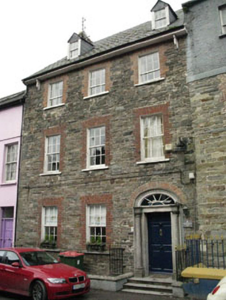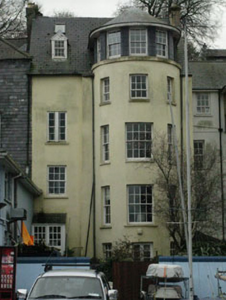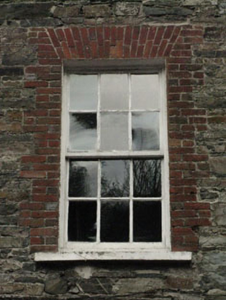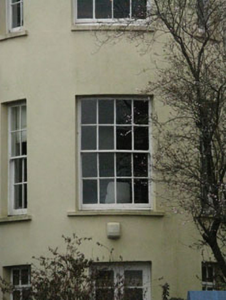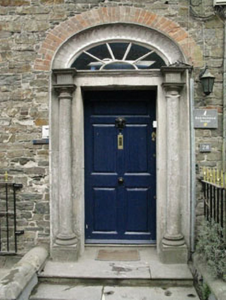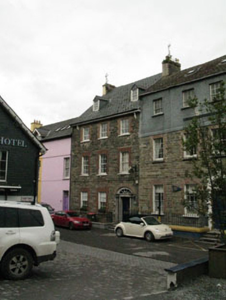Survey Data
Reg No
20851129
Rating
Regional
Categories of Special Interest
Architectural, Artistic
Original Use
House
In Use As
Office
Date
1740 - 1780
Coordinates
164142, 49955
Date Recorded
02/03/2009
Date Updated
--/--/--
Description
Terraced three-bay three-storey over basement and with dormer attic former house, built c.1760, having four-storey elevation to rear. Four-storey bow-fronted projecting bay to rear with dormer attic. Now in use as office and apartment. Pitched artificial slate roof with rendered chimneystacks, uPVC rainwater goods and timber clad eaves with carved timber brackets. Pitched slate roofs to dormer windows. Conical artificial slate roof to bowed bay. Roughly dressed stone wall to front (south-west) elevation, rendered walls to rear (north-east) elevation. Square-headed diminishing window openings with stone sills. Red brick block-and-start surrounds to front elevation openings with six-over-six and six-over-three pane timber sliding sash windows. Bipartite timber framed window with two-over-two pane timber sliding sash windows and single six-over-six timber sliding sash window to rear elevation. Bowed eight-over-eight pane windows flanked by four-over-four pane timber sliding sash windows to first and second floors of bow-fronted bay having six-over-three pane window flanked by four-over two pane timber sliding sash windows to third floor. Six-over-six pane timber sliding sash windows to dormer windows. Round-headed door opening within carved limestone doorcase, comprising engaged Doric columns, surmounted by frieze and cornice. Timber panelled door surmounted by spoked fanlight having carved tooled limestone archivolt with red brick relieving arch. Carved limestone steps to approach flanked by rendered plinth to front (southwest). Set along roadside with garden to rear.
Appraisal
This large and impressive house retains many of its typically Georgian style features. While its steeply pitched roof suggests and eighteenth century date, the fine doorcase is probably an early nineteenth century insertion. Its unusual four-storey bowed bay to the rear distinguishes this building when seen from the rear.

